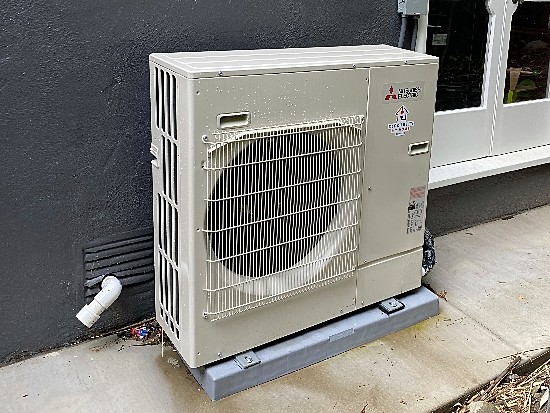
Despite yesterday’s announcement by the Prime Minister of the United Kingdom to roll back climate targets including scrapping plans to have building and homeowners move from gas-fired boilers to heat pumps, there is no doubt that the latter is an effective way to contribute to reducing global carbon emissions since our legacy built infrastructure is a huge source of greenhouse gasses.
In a recent issue of The Economist, it reported that 12 members of the European Union have announced plans to stop heating buildings using fossil fuels. The alternative renewable technologies include switching to solar panels and battery storage, and a device that has been waiting in the wings for decades called the heat pump.
Heat pumps use technology similar to that which is found in refrigerators and air conditioners. They extract heat from the air or other sources, amplify it and distribute it where needed. They also can work the opposite way to draw in cool air and distribute it. A heat pump, therefore, can replace both a furnace and air conditioner.
Heat pumps are more efficient than conventional furnaces or baseboard electric heating. Their output is measured in coefficients of performance (COP), which is typically 4 times greater than the energy needed for their operation, outperforming conventional fossil-fuel heating systems that use natural gas or oil. And if the electricity used to power them comes from renewable sources, heat pumps are carbon-emission free.
In 1979, when my wife and I purchased a two-bedroom condominium, it had a heat pump. But when we eventually bought a house in the mid-1990s we reverted back to a conventional gas-fired furnace and air conditioning system. So our only experience with what was then seen as a fairly novel solution was rather short-lived.
In our new apartment, we have been reintroduced. The operation is seamless. The technology is mature. We have one advantage most Canadians don’t have. Our building is brand new and therefore doesn’t face the challenge of older construction trying to adopt the technology.
Although a home retrofit with a heat pump is a desirable change, it is not necessarily an easy one. The Economist article lists some of the challenges of making the switch. For example, it is not just a simple swap to replace a gas or oil-fired furnace and air conditioning system with a heat pump because the form factors are different requiring both a large indoor space and area outside as well. For 60% of European properties states the Economist, the conversion to heat pumps means major upgrades to walls and roof insulation, as well as to new windows, doors and even roofs. That brings up the cost considerably making the swap less attractive.
In Canada where homes and buildings rarely are more than a century old, the switchover is tough enough. But for Europe and the United Kingdom with homes several hundred years old, conversion difficulties abound. Walls and roofs need to be reinsulated. Floors have to be lifted or replaced with insulation inserted. And don’t even get started about dealing with the windows, doors and roofs.
That may be one of the reasons Britain’s Prime Minister announced today that the government was scrapping some of its net-zero policies around home retrofits and other initiatives. He stated the government was facing a backlash from citizens because of all of the issues described above. And he is not alone in rolling back home heating green conversions. Germany recently announced it was delaying its policies to replace fossil-fuel heating and cooling systems with green alternatives for homes and buildings.
There are ways to lessen the pain of making the switch. Canada has been offering grants and interest-free loans to cover a considerable amount of homeowner costs. The United States, in the Inflation Reduction Act, is offering tax credits and other incentives to make the switch.
But almost everywhere, moving to greener energy solutions such as heat pumps is being encumbered by administrative regulation, approval delays, a lack of home and building inspectors, and not enough skilled workers to do the jobs. It is a case of policy and regulatory changes running well ahead of market realities, and it is making home and building owners more reluctant to switch.
Lessons to be learned: Governments when instituting green policies need to do more than announcements backed by money. There has to be more education for consumers to make informed deciosions. There needs to be enough supply of the technology to meet the growing demand. There has to be a trained workforce to execute the program. And the education of the public and training of both inspectors and installers needs to precede policy changes if greening homes and buildings is to work.








